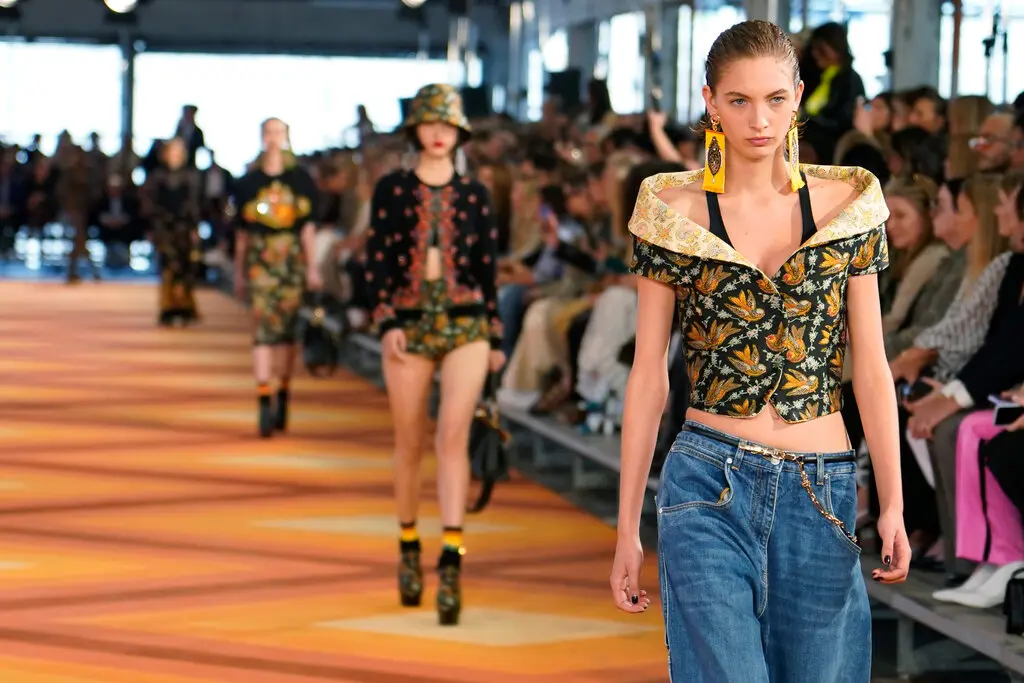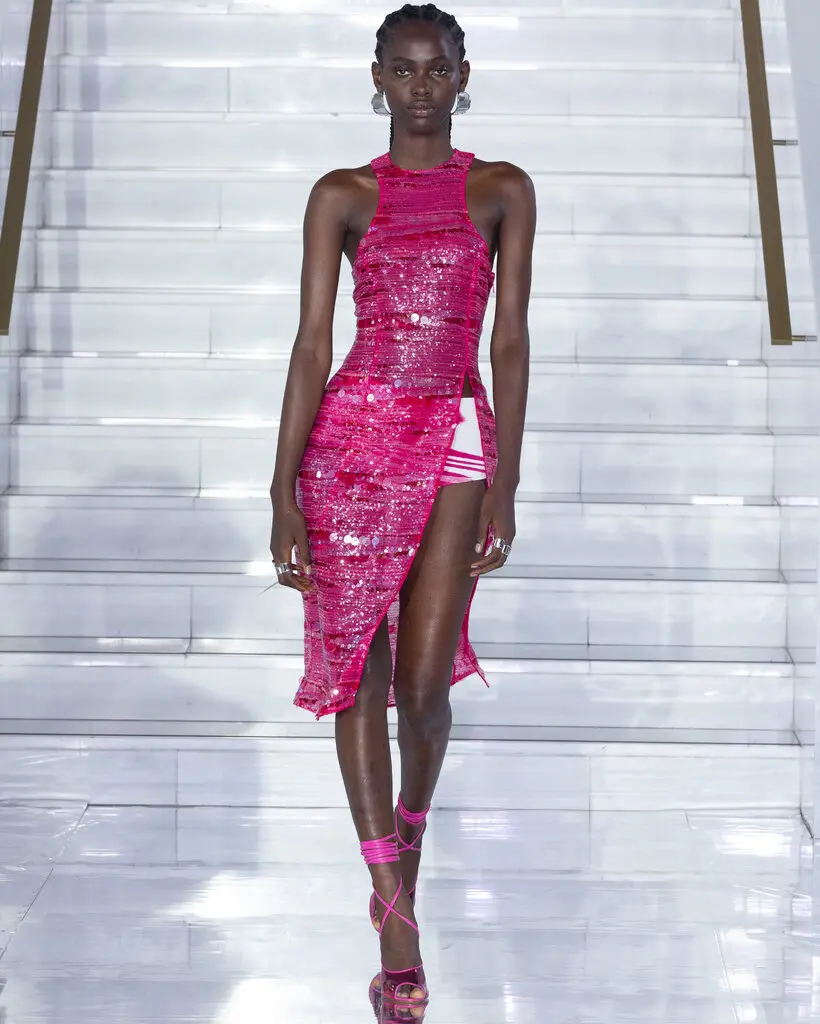MILAN — Gucci is still the great success story of Milanese fashion: A heritage name gone stale and then revolutionized by a new designer and turned into an influence and cash machine that keeps going and going. It’s the gold ring every competitor is chasing. Including, this season, Ferragamo, Bally, Missoni and Etro.
That may be why, for his debut at Bally, Rhuigi Villaseñor, the self (and mom)-taught founder of the haute L.A. streetwear line Rhude, opted to transform the formerly stiff Swiss label into what looked like nothing so much as a sort of Gucci-in-its-Tom-Ford-late-’90s-heyday tribute brand. There was python! There were metallic leathers and big, shiny buckles! Shirts unbuttoned to the navel, jersey gowns with big chunks bitten out of the sides and back and gold-plated attitude — for both men and women.
Derivative though the ethos may have been, that energy has been missing from the catwalks for awhile now (Gucci sure isn’t doing it any more) and, with some faded denim thrown in, it was still a heck of a lot of fun.

More fun, anyway, than at Etro, now owned by the LVMH-backed private equity fund L Catterton and with Marco de Vincenzo rather than any family member at its design helm.
Mr. de Vincenzo swept out the paisley and the globe-trotting hippie de luxe dresses in favor of what is turning into the most ubiquitous silhouette in Milan — big trousers (cargo or not) with a cropped or bra top — in tapestry brocades as well as shorts with over-the-knee boots and wafty ombre knits, all of it accessorized to the last earring. The result was younger and more commercial, as was probably his mandate, but also less original.

Still it was better than the blunt force trauma inflicted on Missoni by Filippo Grazioli, who tossed out the brand’s signature kaleidoscopic knits in favor of a reductive black and white (or hot pink and white, bright blue and white, yellow and white) zigzag and an ’80s department store bridge-line mix of bodycon, sheer and sarong. Imagine naughty French maid costumes, but for naughty tennis players, and you’ll get the idea.

At least at Ferragamo, Maximilian Davis, making the leap from his former home base of London, took the fashion part slow, offering up instead a new logo (sans the Salvatore), a signature color (a kind of rich Sienna red) and a collection very heavy on the handbags. They were big, with two-tone curving combinations of leather and canvas or smaller and hung on the belt for day; tiny and bracelet-like or pod-shaped and dangling lengthy fringe for evening.

Although in his show notes Mr. Davis cited Old Hollywood as an inspiration, the bags were the stars, with the clothes — tailored, understated, with athletic-inspired separates, sunset-tone scarf dresses and sheer peplos drapery — cast in minor supporting roles.
It didn’t qualify as a blockbuster, but as the opening episode of a streaming series, it was good enough to make you look forward to what comes next.



















Comments